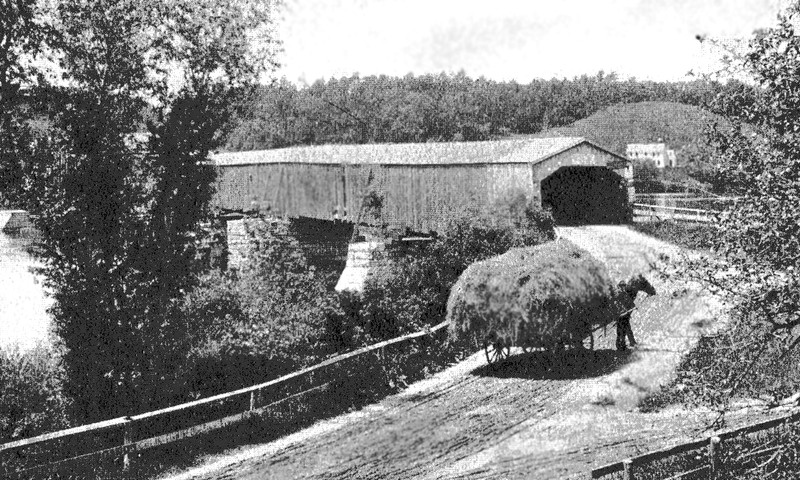This entry includes a walking tour! Take the tour.
Introduction
Text-to-speech Audio
Images
Rocks Village Bridge

Backstory and Context
Text-to-speech Audio
Rocks Village is situated along the Merrimack River, and gets its name from rocks situated not too far upstream in the river. When the area was first settled in the 1600s, a man named Nathaniel Holt got stuck on some boulders at a bend in the river, thus earning the location the name “Holt’s Rocks”. It has been well documented that by 1652 there was a tavern being operated not too far from where the bridge stands now, named Coffin’s Ordinary.
Around 1666, Haverhill was divided, and William Holdridge was granted the land that now includes Rocks Village; he later sold it to Zacharia Davis. Originally an agricultural settlement, the village grew into a commercial and industrial center. During the heyday of shipping, Rocks Village was home to shipyards and several smaller cottage industries scattered throughout the settlement. During the harsh New England winters, because they could not farm, many turned to making shoes and other means to provide for their families. Although it may appear to be a sleepy corner of the city, Rocks Village was once a thriving center with a shipyard, its own groceries, a post office, a school, a doctor, and many other enterprises that you would expect to find in a functioning town.
In 1711 John Swett was appointed the ferryman at Rocks Village, a position he would hold for forty years. By 1718 it was known that he had been charged with carrying people across the river for “penny a single person and four pence for a man and horse”. By 1731, Swett owned the land on both sides of East Main Street.
By the late 1800’s, Rocks Village had regressed back to a quiet, rural village and a great place to raise a family.
The buildings date back to the eighteenth century through the twentieth century. The homes range in style from Federal to Colonial Revivals and are often a mix of architectural styles and features known as vernacular architecture.
Cite This Entry
Alex Martin on behalf of Buttonwoods Museum. "Rocks Village Historic District." Clio: Your Guide to History. July 1, 2020. Accessed April 15, 2025. https://theclio.com/entry/106361
Sources
Krenzer, Samantha. Rocks Village Historic District Architectural Walking Tour. Haverhill, Massachusetts. Buttonwoods Museum.
Rocks Village in Haverhill, Massachusetts. Accessed June 9th 2020. http://www.rocksvillage.org/.
Rocks Village Historic District. National Register of Historic Places Inventory - Nomination Form. Published December 12th 1976.
Senter Digital Archive, Haverhill Public Library. Accessed June 9th 2020. https://haverhill.pastperfectonline.com/.
Whittier, John Greenleaf. "The Countess." 1863.

